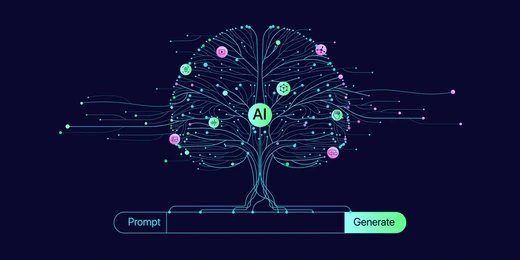
Database : A Guide to Different Types
Databases are crucial in organizing and managing vast amounts of data efficiently. From traditional relational databases to modern NoSQL and cloud-based solutions, there is a wide array of database types, each with its own set of characteristics and use cases. Let’s explore various types of databases and understand their unique features along with real-world examples:

1. Centralized Database
A centralized database is a single repository where all data is stored and managed in one location. It provides a centralized point of control, making data access and management more straightforward. Examples include traditional SQL databases like MySQL and Oracle.
Database Characteristics:
- Single repository for all data.
- Centralized control and management.
- Data consistency and integrity are maintained.
- Typically uses a client-server architecture.
Use Case:
- Enterprise Resource Planning (ERP) systems.
- Customer Relationship Management (CRM) software.
- Human Resource Management Systems (HRMS).
2. Cloud Database
Cloud databases are hosted on cloud computing platforms, offering scalability, flexibility, and accessibility over the internet. They eliminate the need for physical infrastructure and provide features like automatic backups and high availability. Examples include Amazon Aurora, Google Cloud Spanner, and Microsoft Azure SQL Database.
Characteristics:
- Hosted on cloud platforms, offering scalability and accessibility.
- Eliminates the need for physical infrastructure.
- Offers features like automatic backups and high availability.
- Pay-as-you-go pricing model.
Use Case:
- E-commerce platforms.
- Software as a Service (SaaS) applications.
- Big data analytics and processing.
3. Commercial Database
Commercial databases are proprietary solutions offered by vendors for a fee. They come with advanced features, technical support, and regular updates. Examples include Oracle Database and IBM Db2.
Characteristics:
- Proprietary solutions offered by vendors.
- Advanced features, technical support, and regular updates.
- Generally, more expensive than open-source alternatives.
- Often used in large enterprises with complex requirements.
Use Case:
- Large financial institutions.
- Government agencies.
- Healthcare organizations.
4. Distributed Database
Distributed databases store data across multiple locations or nodes. They offer improved performance, fault tolerance, and scalability. Examples include Apache Cassandra and MongoDB.
Characteristics:
- Data distributed across multiple locations or nodes.
- Improved scalability, fault tolerance, and performance.
- Typically uses replication or partitioning techniques.
- Complex data consistency and synchronization mechanisms.
Use Case:
- Social media platforms.
- Content delivery networks (CDNs).
- Global e-commerce platforms.
5. End-User Database
End-user databases are designed for individual users or small teams. They are often user-friendly and require minimal technical expertise to operate. Examples include Microsoft Access and FileMaker.
Characteristics:
- Designed for individual users or small teams.
- User-friendly interfaces with minimal technical requirements.
- Often used for personal projects or small-scale applications.
- Limited scalability and concurrent user support.
Use Case:
- Small businesses.
- Educational institutions.
- Personal projects and hobbyists.
6. Graph Database
Graph databases are optimized for managing interconnected data and relationships. They excel in scenarios where relationships between entities are crucial, such as social networks and recommendation systems. Examples include Neo4j and Amazon Neptune.
Characteristics:
- Optimized for managing interconnected data and relationships.
- Uses graph structures like nodes, edges, and properties.
- Enables efficient traversal of relationships.
- Suitable for complex queries involving relationships.
Use Case:
- Social networks.
- Recommendation systems.
- Fraud detection and network analysis.
7. NoSQL Database
NoSQL databases, or “Not Only SQL,” are non-relational databases designed to handle unstructured or semi-structured data. They offer flexibility, scalability, and high performance. Examples include MongoDB, Cassandra, and Redis.
Characteristics:
- Non-relational databases for unstructured or semi-structured data.
- Flexible data models (key-value, document, column-family, graph).
- Horizontal scalability and high performance.
- Schema-less or dynamic schema capabilities.
Use Case:
- Internet of Things (IoT) applications.
- Real-time analytics.
- Content management systems.
8. Object-Oriented Database
Object-oriented databases store data in the form of objects, along with their attributes and methods. They are suitable for object-oriented programming languages and complex data structures. Examples include db4o and ObjectDB.
Characteristics:
- Stores data in the form of objects, along with attributes and methods.
- Supports complex data structures and inheritance.
- Seamless integration with object-oriented programming languages.
- Suitable for complex data modeling scenarios.
Use Case:
- Software development projects.
- CAD/CAM systems.
- Multimedia applications.
9. Open-Source Database
Open-source databases are freely available with source code accessible for modification and redistribution. They offer cost-effectiveness, community support, and flexibility. Examples include PostgreSQL, MySQL, and SQLite.
Characteristics:
- Freely available with source code accessible for modification.
- Cost-effective with no licensing fees.
- Community-driven development and support.
- Flexibility to customize and extend functionalities.
Use Case:
- Startups and small businesses.
- Educational institutions.
- Research projects and prototypes.
10. Operational Database
Operational databases are optimized for transactional processing and day-to-day operations of an organization. They ensure data integrity, consistency, and reliability. Examples include Oracle Database and SQL Server.
Characteristics:
- Optimized for transactional processing and day-to-day operations.
- Ensures data integrity, consistency, and reliability.
- Supports ACID (Atomicity, Consistency, Isolation, Durability) transactions.
- High concurrency and low-latency requirements.
Use Case:
- Banking systems.
- Online transaction processing (OLTP) systems.
- Reservation and booking systems.
11. Personal Database
Personal databases are used by individuals to store personal information, such as contacts, notes, and finances. They are often lightweight and easy to use. Examples include Microsoft Excel and Google Sheets.
Characteristics:
- Used by individuals to store personal information.
- Lightweight and easy-to-use.
- Often includes basic functionalities like sorting and filtering.
- Limited scalability and security features.
Use Case:
- Personal finance management.
- Address books and contact lists.
- Hobby project tracking.
12. Relational Database
Relational databases organize data into tables with rows and columns, and they establish relationships between these tables. They offer robust query capabilities and support SQL for data manipulation. Examples include MySQL, PostgreSQL, and Microsoft SQL Server.
Database Characteristics:
- Organizes data into tables with rows and columns.
- Establishes relationships between tables using keys.
- Supports SQL for querying and manipulation.
- ACID-compliant transactions ensure data integrity.
Use Case:
- Online retail stores.
- Banking and finance.
- Inventory management systems.
13. Vector Database
Vector databases are optimized for storing and processing large volumes of vector data, such as spatial and time-series data. They provide specialized indexing and query capabilities for vector-based operations. Examples include InfluxDB and TimescaleDB.
Characteristics:
- Optimized for storing and processing vector data (spatial and time-series).
- Specialized indexing and query capabilities.
- Efficient handling of large volumes of timestamped data.
- Often used in geospatial and scientific applications.
Use Case:
- Geographic Information Systems (GIS).
- Environmental monitoring.
- Financial market analysis.
In conclusion, the choice of database type depends on factors such as data structure, scalability requirements, performance goals, and budget constraints. By understanding the characteristics and use cases of different types of databases, organizations can make informed decisions to meet their data management needs effectively. Whether it’s a traditional relational database or a cutting-edge cloud-native solution, selecting the right database is crucial for ensuring optimal performance and scalability in today’s data-driven world.














